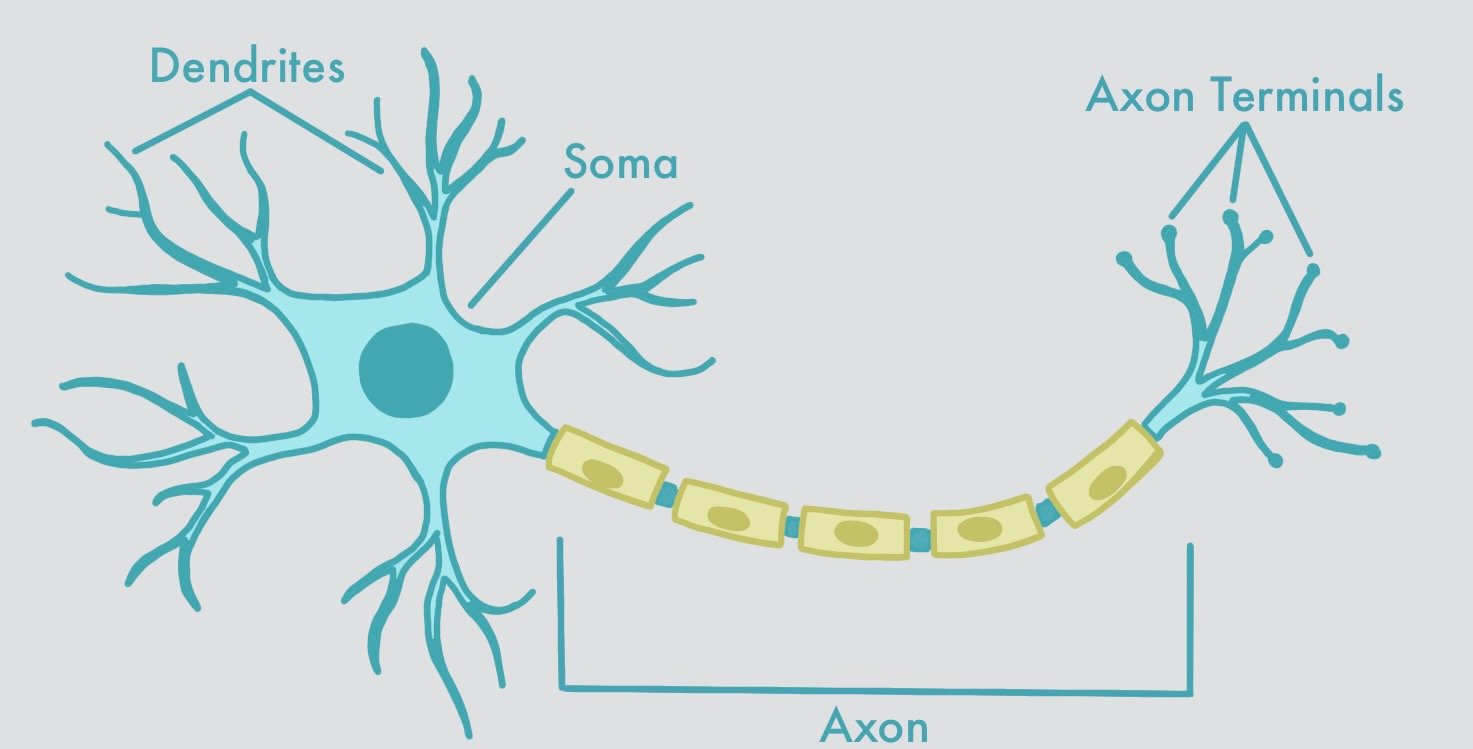What are Neurons?
Neurons are the cells responsible for communicating information in the nervous system. These cells, as known as the fundamental units of the nervous system, are what make us human. Neurons can come in all different shapes and sizes, and have various roles within the body.
There are roughly 100 billion neurons in the nervous system, receiving information from the outside world, communicating information within and beyond the body, and making us who we are.
Anatomy of a Neuron
A neuron can be broken down into four different structures:
Dendrites: receive information from other tissues or neurons
Soma (cell body): contains genetic information (in the nucleus), provides energy and maintains the neuron’s structure
Axon: the long, thin section of the neuron, along which action potentials are generated to communicate information
Axon terminals: where neurotransmitters are housed, which are chemical signals that are used to communicate information between neurons and tissues in the body
Action Potentials
How do neurons know when to communicate with each other and what information is important? The answer is action potentials.
Action potentials are brief electrical events which signal that a neuron is “active.” It is sort of light briefly flipping the lights on inside the neuron. The action potential, once generated, travels down the axon to the axon terminals. The electrical signal releases neurotransmitters in the axon terminals, which communicate information to other neurons and tissues in the body.
Different neurons have different criteria that must be met in order for an action potential to be generated. Additionally, different neurons communicate different signals to other neurons via distinct neurotransmitters. This allows neurons to carry all different types of information throughout the body.


